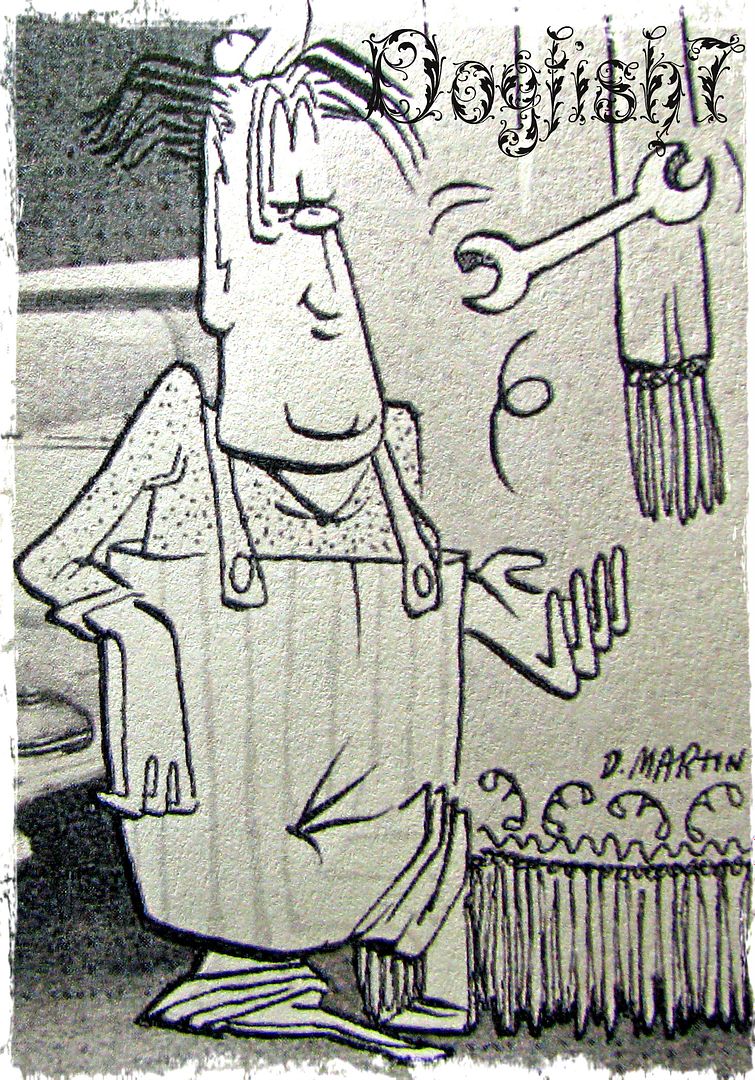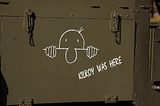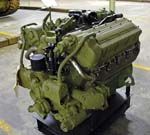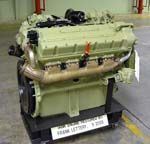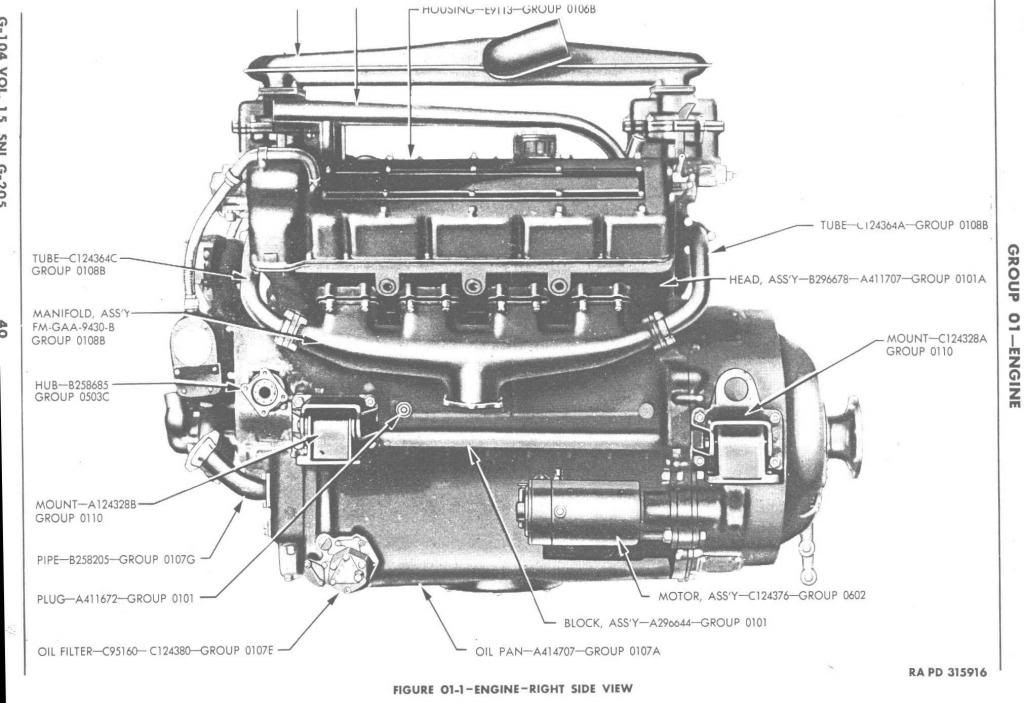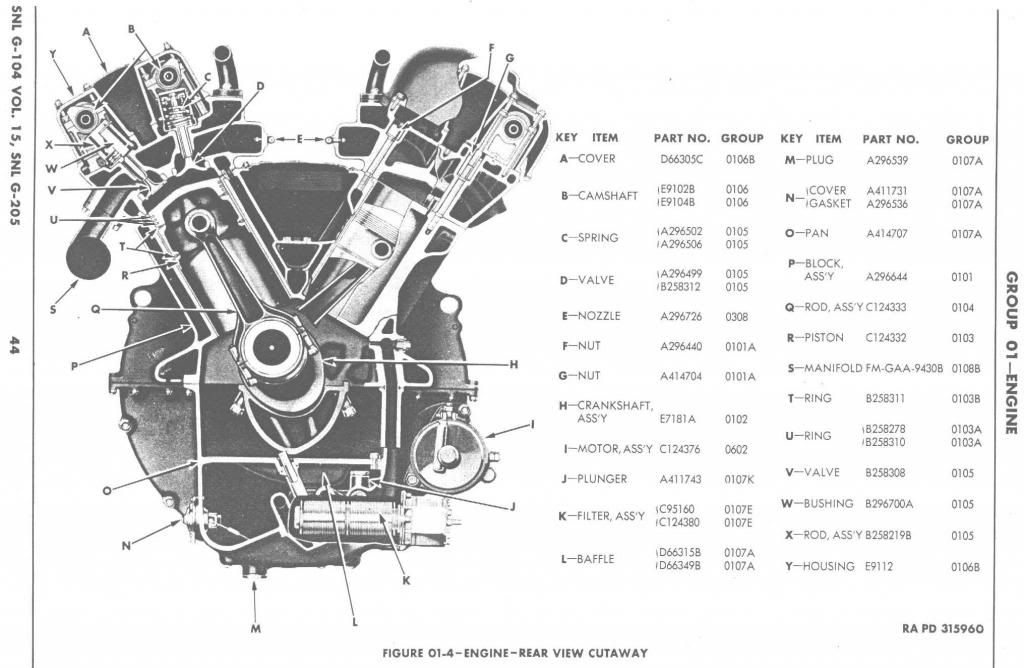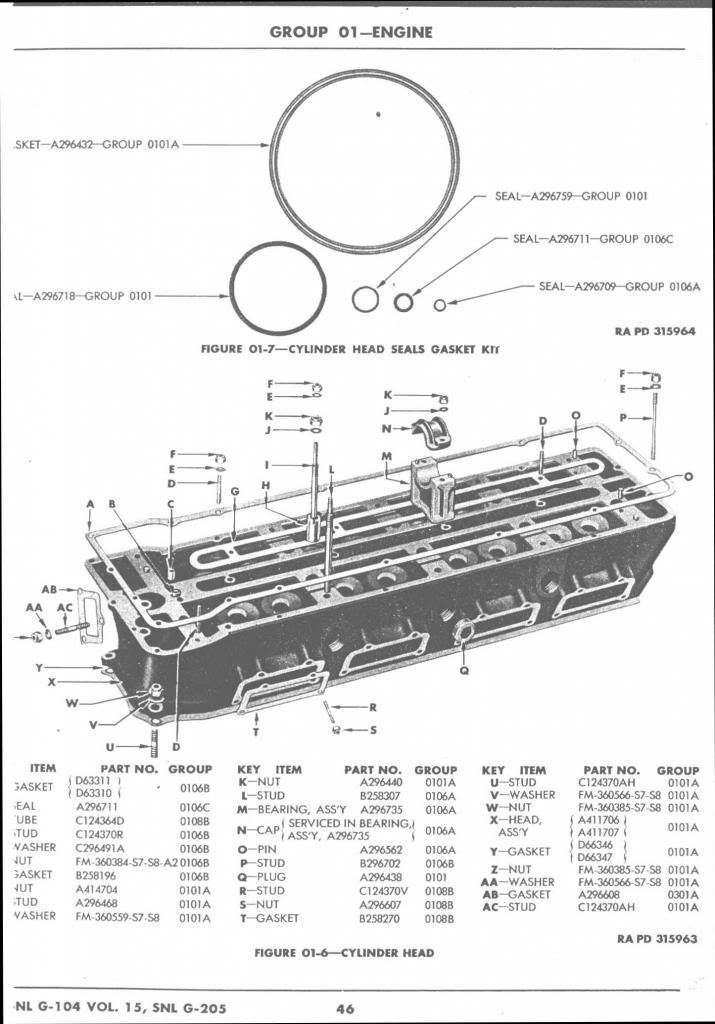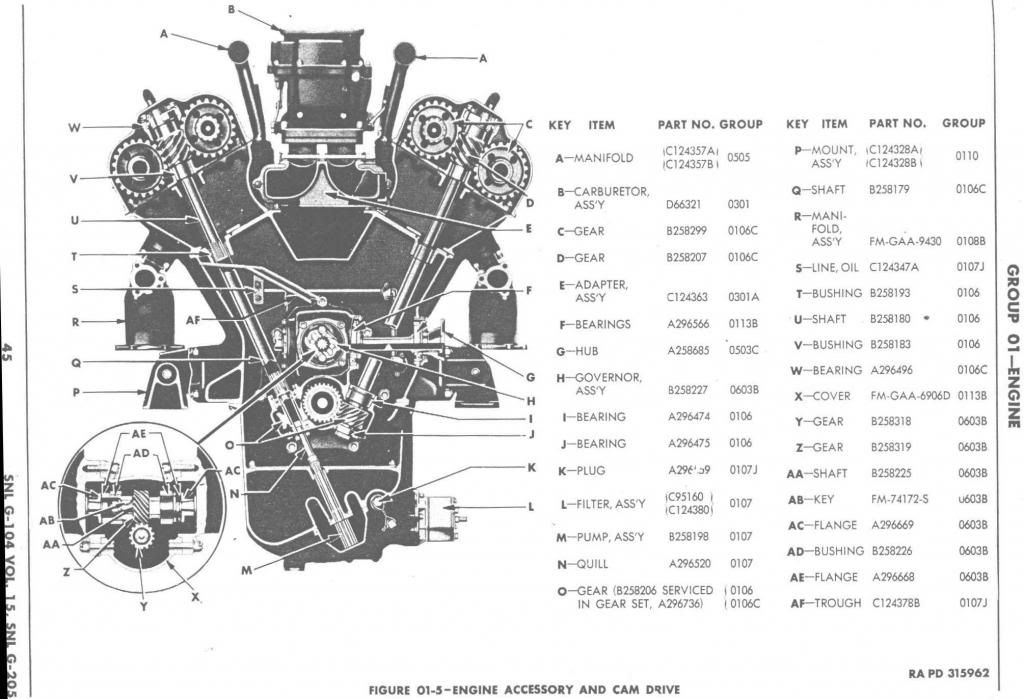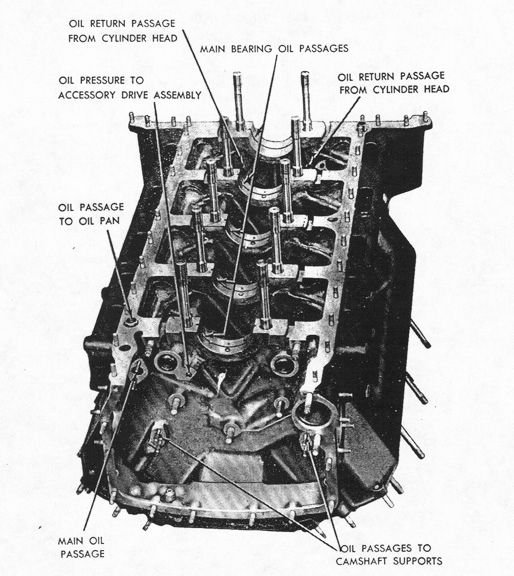Post by Allied-Eric on Sept 20, 2013 21:34:43 GMT -5
Below are a few general photos of the M4A3 power plant, The Ford GAA V8 Gasoline Engine.
(Disclaimer: I collected these photos from all over the internet and no long recall from where, but I do not clam them as my own)
First are two photos of an GAA engine swap. This would make a kool little dio with the soon to be released DIAMOND T969 WRECKER from Mirror Models


Now some Pics of the GAA




Through the Engine door on the lower rear hull

A Little History of the GAA from fordgaaengine.com
There are many stories of how the GAA engine came into existence, and most likely all have some validity. The following is one version of it:
In World War 1, Ford was a manufacturer of the Liberty V12 aircraft engine for the army air corps, and as it became apparent there could be a second global conflict, Ford wanted to again get into the aircraft engine business. To this end, Rolls-Royce was contacted regarding licensed production of their new Merlin V12 engine, but no licensing agreement could be reached. In fact, the Merlin was instead licensed to Packard, and the Packard Merlin was used in P-51 Mustangs in Europe, along with other applications. Henry Ford vowed to build an engine of the exact same size, but which would be more technically advanced and with more power than the Rolls. A 1650-cid, 4-cam, 48-valve V-12 engine was designed, and Ford approached the army air corps with a production proposal. So sure was Ford that the proposal would be approved and contracts for production awarded, a matter of Ford's continuing over-optimism, that production preparations were made, including making the casting cores and ordering the tooling. However, the competition was the Allison 1710 cid V12, and it had already been in production for some years. Large amounts of spare parts were on hand and numbers of mechanics had been trained to work on it. So, a production contract for the Ford 1650 V-12 was not awarded.
At the same time, the army tank corps was searching for a suitable engine for the Sherman tank. Initially, the Sherman used a 9-cyl radial air-cooled engine, but this engine was in critical short supply for aircraft uses. As well, the engine tended to foul spark plugs on the bottom cylinders, and seemingly at the worst times, such as when jousting with German panzers. The tank corps tried using a Chrysler "multi bank" engine, which was really five inline 6-cylinder flatheads bolted to a common crankcase. This was unsatisfactory because of the nightmare of servicing a 30-cylinder engine, and because total output was only 375 hp, not nearly enough for a 35-ton tank going cross-country. Shermans with twin GMC 6-71 diesels were produced for the Marines, mostly to lessen the threat of fuel fires on landing vessels, but since the 6-71 itself was still being developed, another alternative was desired. Therefore the army went to Ford and in effect said, "Look, we don't need another aircraft V12, but we do need a good tank V8." Ford then took the casting cores for the V12, chopped off the rear 4 cylinders, and the GAA V8 was born. To facilitate a quick production startup on the engine, it was decided to keep the existing design, which meant that the engine stayed as a 60-degree V-engine, and because all the design, engineering and coring was for aluminum, this feature was kept as well. Thus we have the Ford GAA, an "accidental" engine of the finest magnitude, likely the biggest light alloy, water cooled V8 engine ever built.
Now I’ll finish up with two little points of interest about the Ford GAA.
The Routing of the cool water from the armored filler cap just under the rear of the turret to the Radiator.



Next up is the location of the Air Cleaners for the M4A3 Dry Storage and Wet Storage


My hopes are that you find this information useful in an upcoming Sherman build. I’ll post more soon so keep an eye out for additional material here. Please feel free to post your own insights regarding the Ford GAA Tank Engine.
(Disclaimer: I collected these photos from all over the internet and no long recall from where, but I do not clam them as my own)
First are two photos of an GAA engine swap. This would make a kool little dio with the soon to be released DIAMOND T969 WRECKER from Mirror Models


Now some Pics of the GAA




Through the Engine door on the lower rear hull

A Little History of the GAA from fordgaaengine.com
There are many stories of how the GAA engine came into existence, and most likely all have some validity. The following is one version of it:
In World War 1, Ford was a manufacturer of the Liberty V12 aircraft engine for the army air corps, and as it became apparent there could be a second global conflict, Ford wanted to again get into the aircraft engine business. To this end, Rolls-Royce was contacted regarding licensed production of their new Merlin V12 engine, but no licensing agreement could be reached. In fact, the Merlin was instead licensed to Packard, and the Packard Merlin was used in P-51 Mustangs in Europe, along with other applications. Henry Ford vowed to build an engine of the exact same size, but which would be more technically advanced and with more power than the Rolls. A 1650-cid, 4-cam, 48-valve V-12 engine was designed, and Ford approached the army air corps with a production proposal. So sure was Ford that the proposal would be approved and contracts for production awarded, a matter of Ford's continuing over-optimism, that production preparations were made, including making the casting cores and ordering the tooling. However, the competition was the Allison 1710 cid V12, and it had already been in production for some years. Large amounts of spare parts were on hand and numbers of mechanics had been trained to work on it. So, a production contract for the Ford 1650 V-12 was not awarded.
At the same time, the army tank corps was searching for a suitable engine for the Sherman tank. Initially, the Sherman used a 9-cyl radial air-cooled engine, but this engine was in critical short supply for aircraft uses. As well, the engine tended to foul spark plugs on the bottom cylinders, and seemingly at the worst times, such as when jousting with German panzers. The tank corps tried using a Chrysler "multi bank" engine, which was really five inline 6-cylinder flatheads bolted to a common crankcase. This was unsatisfactory because of the nightmare of servicing a 30-cylinder engine, and because total output was only 375 hp, not nearly enough for a 35-ton tank going cross-country. Shermans with twin GMC 6-71 diesels were produced for the Marines, mostly to lessen the threat of fuel fires on landing vessels, but since the 6-71 itself was still being developed, another alternative was desired. Therefore the army went to Ford and in effect said, "Look, we don't need another aircraft V12, but we do need a good tank V8." Ford then took the casting cores for the V12, chopped off the rear 4 cylinders, and the GAA V8 was born. To facilitate a quick production startup on the engine, it was decided to keep the existing design, which meant that the engine stayed as a 60-degree V-engine, and because all the design, engineering and coring was for aluminum, this feature was kept as well. Thus we have the Ford GAA, an "accidental" engine of the finest magnitude, likely the biggest light alloy, water cooled V8 engine ever built.
Now I’ll finish up with two little points of interest about the Ford GAA.
The Routing of the cool water from the armored filler cap just under the rear of the turret to the Radiator.



Next up is the location of the Air Cleaners for the M4A3 Dry Storage and Wet Storage


My hopes are that you find this information useful in an upcoming Sherman build. I’ll post more soon so keep an eye out for additional material here. Please feel free to post your own insights regarding the Ford GAA Tank Engine.














